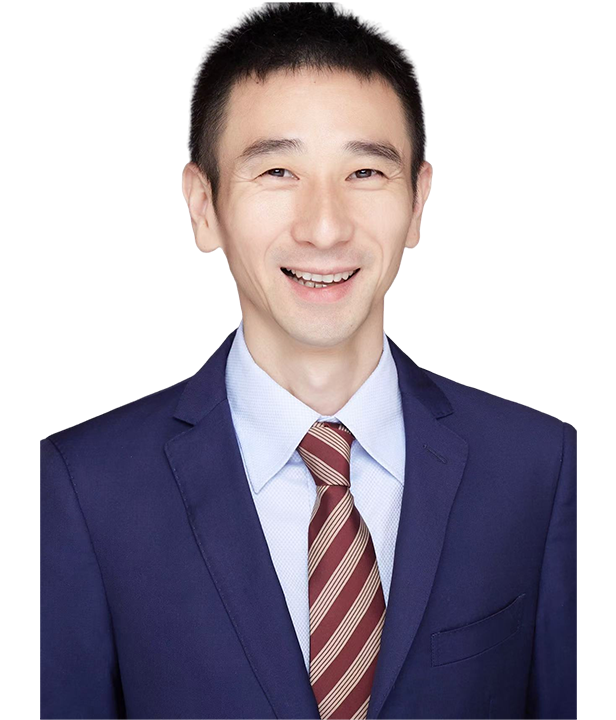©2024 Zhejiang Zhiben Law Firm. All rights reserved.Zhejiang
LABEL: Real estate ,
According to the latest United Nations standards, if the population aged 65 and above accounts for more than 7% of the total population, it is considered an aging society. If it exceeds 14%, it is considered an aging society, and if it exceeds 21%, it is called a super elderly society. As of February 2024, the population of people aged 65 and above in China has grown to 217 million, accounting for 15.4%. The growth of the elderly population far exceeds that of the new population, and population aging will become the new normal. China's neighboring country Japan has entered a super aging society since 2007, and the Japanese government and private sector have made various responses in response to the deepening aging problem, keeping up with the times.In recent years, with the process of aging, the exchanges between the two countries in the field of elderly care have continued to deepen, and many investors have also turned their attention to Japan's elderly care facilities. But although the cultures of the two countries are similar, they are different. Whether it is direct investment in Japan or the introduction of Japanese style elderly care in China, each country needs to consider its own policies and environment in order to operate successfully. In the following text, we will introduce an overview of Japan's elderly care facilities based on the considerations when investing.
1、 Overview of Elderly Care Facilities in Japan
In 1963, Japan promulgated the Elderly Welfare Law, which made clear regulations on the operation of elderly welfare facilities, marking the beginning of Japan's special attention to the elderly population in the social security system. This law clarifies the basic rights of the elderly and elaborates on specific service measures. Subsequently, based on the ideas of supporting self-care, user centered, and social insurance, the Care Insurance Law was implemented in 2000 and has undergone multiple revisions in conjunction with social conditions. According to the elderly's self-care ability, the state and insurance provide varying degrees of reimbursement for facility occupancy expenses.
Like various elderly care facilities in China, the services provided by various elderly care facilities in Japan vary depending on the needs of different elderly people and the level of facilities.
In Japan, common elderly care facilities now include privately owned paid elderly care homes, residential paid elderly care homes, additional service oriented homes for the elderly, collective homes, as well as public care homes, special care homes, and special care homes for the elderly. Home, elderly care insurance facilities (elderly care facilities), nursing and recuperation medical facilities (nursing and recuperation medical facilities), etc.
In addition, some companies and autonomous organizations have launched the American model of CCRC (Continuous Care Retirement Community) to provide services for self-care, assisted, and caregiver elderly people. This model not only allows the elderly to enjoy an age appropriate living environment, but also provides corresponding care and medical services as their health status changes, achieving high quality and dignity of elderly life. For example, in Nasu cho, Tochigi Prefecture, where the aging population has reached 40.4% (2020), CCRC is being created with a focus on service-oriented housing for the elderly.
2、 Operation of private elderly care facilities
(1) Basic requirements for establishment
Among private elderly care facilities, residential fee based elderly care homes and fee based elderly care homes are the most common. The former mainly provides services such as life assistance (including meals, household chores, medication, oral health, etc.), health management, outdoor support, care services, daily life consultation, etc. Most facilities also provide one-on-one services for the elderly. The latter mainly focuses on care, life support, health management, medical behavior, emergency response, meals, rehabilitation, cultural and sports activities, etc. However, it should be noted that as "care services" belong to the scope of insurance reimbursement, in order to reduce the burden on each autonomous body, each region will manage the quantity of such elderly care facilities (total control), and the establishment needs to be designated by the local administrative chief. Therefore, the fastest growing category in terms of quantity at present is the residential fee based elderly home. The Elderly Welfare Law does not impose too many restrictions on the establishment of fee based elderly hometowns. In addition to private enterprises with legal personality, medical legal persons, social welfare legal persons, etc., ordinary companies can also be established.
In order to provide residents with a peaceful, safe, and healthy life, the Elderly Welfare Law, the Care Insurance Law, and administrative orders for individual care have all set minimum standards for facilities. For example, considering the convenience of wheelchair users, it is required that the width of the corridor be at least 1.8 meters or more.
In terms of facilities, the rooms are divided into general rooms and nursing rooms. In principle, all rooms are single rooms with an average area of 13 square meters or more per person. The facilities should include at least toilets, bathrooms, offices, washbasins, laundry facilities, canteens, garbage disposal rooms, nursing staff offices, medical rooms, etc.
In terms of personnel allocation, it is usually required that the ratio of occupants to caregivers be at least 3:1. However, the initial target group for residential fee based elderly HOME was relatively healthy and self-sufficient elderly people, so this personnel allocation regulation does not apply to residential fee based elderly HOME. In addition, a ratio of at least 100:1 is required for resident life consultants and planning managers, as well as one or more physical function training instructors. In the paid elderly care home, nutritionists, physical training instructors, caregivers, and care managers need to obtain relevant qualifications. There are no special requirements for other positions, but in order to operate safely and smoothly, most of them will also use personnel with relevant knowledge.
(2) Establish process
When setting up elderly care facilities, the first step is to determine the business plan and submit a proposal to the local city, town, and village where it is located, in order to make sufficient adjustments with the local welfare departments in the initial stage. After that, an application can be submitted to the prefecture where it is located. After the application is approved, the application for the establishment of elderly care facilities can be made locally, and construction can begin, as well as promotion and reception of residents.
The basic requirements for setting up a fee based elderly home include: ① company establishment fees, ② site acquisition fees (related to land/house purchase or lease fees), ③ equipment procurement fees, ④ personnel fees, ⑤ application and change registration fees, etc.
(3) Operation
In terms of operation, the elderly care facilities built by oneself can be rented to professional care service companies and other operators, with rent as the main source of income. Of course, it is also possible to operate on your own, with monthly expenses and initial fees at the time of check-in as the main source of income. As mentioned earlier, the upfront costs required for setting up elderly care facilities, especially the cost of acquiring the venue, can be relatively high. However, when residents move in, they first need to pay the upfront fees based on the expected period of residence, which are usually high. Therefore, it is not too difficult to recover the upfront investment costs. Residential type charging elderly HOME varies from 80000 to 300000 yen per month depending on whether the elderly can take care of themselves, while care type charging ranges from 150000 to 400000 yen. The initial fee, also known as the housing deposit, is usually charged based on the expected years of residence for the elderly multiplied by the monthly rent, so the amount may range from tens of thousands to millions.
It is worth mentioning that "serviced senior citizen housing (サービーきき高高齢け housing)" can also be one of the investment options. Unlike the charging elderly HOME under the jurisdiction of the Ministry of Health, Labour and Welfare, this type of facility is jointly managed by the Ministry of Land, Infrastructure, Transport and Tourism and the Ministry of Health, Labour and Welfare. Under certain requirements, it can receive official subsidies and support, and there are also preferential policies in terms of fixed asset tax.
3、 Investing in elderly care facilities
With the deepening of aging, Japan's demand for elderly care facilities is increasing, and the growth of the elderly care industry is worth looking forward to. Since 2000, with the implementation of the care insurance system, private elderly care facilities have surged. Compared to non-profit elderly care facilities, private elderly care facilities have more motivation in operation. As long as the services provided are of sufficient quality, they will attract elderly people with sufficient economic ability to move in, and the income is also very considerable. According to data from a Japanese healthcare information website, the largest healthcare company in Japan will have a revenue of approximately 149.8 billion yen in 2023.
When setting up elderly care institutions in Japan, the first thing to pay attention to is as mentioned earlier, because each governing body needs to bear the cost of care insurance. Some autonomous bodies have started to control the number of new institutions opened each year, so it is necessary to confirm with the city, town, village, or prefectural government before investing.
When investing in real estate, profits may be affected due to the location of the property being far from the station or the lack of many commercial facilities in the surrounding area, but these are not the main factors for choosing elderly care facilities. Away from noise, more secluded places are actually more popular. And compared to the scarce real estate resources in bustling commercial areas, there are relatively more optional resources far away from the city center, and the prices are also relatively low. This is one of the advantages of investing in elderly care facilities. However, at the same time, due to some of the requirements of elderly care facilities mentioned earlier, dismantling or renovating the facilities for other purposes may require more costs. In addition to elderly care facilities, it is also possible to consider the popular on-site care (in home, visiting care) in the current Japanese elderly care market. This method allows the elderly to receive care in a familiar environment and feel more at ease. As investors, the amount of capital invested in advance is relatively low.
In high-end elderly care facilities in Japan, residents attach great importance to the quality of service, so it is necessary to ensure sufficient talent or entrust reliable professional teams to operate. In the future, the demand for elderly care facilities in Japanese society will continue to increase. Once the service quality deteriorates due to a shortage of talent, it will affect the profitability of the facilities. In addition to the insurance that can be used, the assets of elderly people in Japan are relatively stable. When providing services, it is more important to pay attention to the quality and richness of the services provided to attract customers than to prioritize price.
At present, Japan's declining birth rate and aging population are becoming increasingly severe, and the traditional structure of families bearing the responsibility of elderly care is difficult to maintain. The demand for elderly care services is constantly increasing. In addition to providing the elderly with a healthy and secure life, it is also a highlight of elderly care facilities that allows them to feel valued, happy, and dignified. For example, in recent years, the increasing number of "composite facilities for the elderly and young" can deepen communication between different generations, promote community relationships within the region, and provide elderly people with "something to do" and reduce the risk of cognitive impairment.
Managing elderly care facilities requires knowledge in multiple fields such as land use and business operations. In order to successfully operate, it is necessary to first clarify the type of business that one wishes to operate. Moreover, laws, regulations, and policies regarding the welfare of the elderly and elderly care facilities are constantly changing with the social environment. When investing, it is necessary to constantly grasp the trends of laws and policies, and if necessary, seek help from professionals who are proficient in the Japanese elderly care industry's legal and business aspects.





